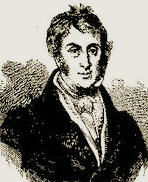Clan Elphinstone People
William Elphinstone (1431 – 1514)
Scottish statesman, Bishop of Aberdeen and founder of the University of Aberdeen born in Glasgow, and educated at the University of Glasgow. After practising for a short time as a lawyer in the church courts, he was ordained a priest, becoming rector of St. Michael’s Church, Trongate, Glasgow, in 1465. Four years later he went to continue his studies at the University of Paris, and then, proceeding to Orléans, became lecturer in the university there.
Elphinstone was made Bishop of Ross in 1481. He was a member of the Parliament of Scotland, and was sent by James III of Scotland on diplomatic errands to Louis XI of France and Edward IV of England. In 1483 he was appointed Bishop of Aberdeen. Early in 1488 he was made Lord High Chancellor, but on the king’s death he vacated this office, and retired to Aberdeen. As a diplomat, his services were quickly required by the new king, James IV of Scotland, in whose interests be visited the kings of England and France, and the German king, Maximilian I, Holy Roman Emperor.
Having been made Keeper of the Privy Seal of Scotland in 1492, the bishop’s concluding years were mainly spent in the foundation of the University of Aberdeen. The papal bull was obtained in 1494, and the royal charter which made Aberdeen the seat of a university is dated 1498. A small endowment was provided by the king, and the university, modelled on that of Paris and intended principally as a school of law, soon became the most famous and popular of the Scots seats of learning. The building of the college of the Holy Virgin in Nativity, now King’s College, was completed in 1506, and the bishop also rebuilt the choir of his cathedral, and built a bridge over the River Dee. Continuing to participate in public affairs he opposed the policy of hostility towards England which led to the Battle of Flodden in September 1513. He died in Edinburgh.
George Keith Elphinstone, 1st Viscount Keith (1746 – 1 1823)
British admiral active throughout the Napoleonic Wars, born in Elphinstone Tower, near Stirling, Scotland. Joined the Royal Navy in 1761, in HMS Gosport. In 1767. He became lieutenant in 1770, commander in 1772, and post captain in 1775.
During the war in America he was employed against the privateers, and with a naval brigade at the occupation of Charleston, South Carolina. In January 1781, when in command of Warwick, he captured a Dutch 50-gun ship which had beaten off a British vessel of equal strength a few days before. After peace was signed he served in Parliament as member first for Dunbartonshire, and then for Stirlingshire.
When war broke out again in 1793 he was appointed to the HMS Robust, in which he took part in the occupation of Toulon. He particularly distinguished himself by beating a body of the French ashore at the head of a naval brigade of British and Spaniards. In 1794 he was promoted rear-admiral, and in 1795 he was sent to occupy the Dutch colonies at the Cape of Good Hope and in India. In August 1796 captured a whole Dutch squadron in Saldanha Bay. In the interval he had gone on to India, where his health suffered, and the capture at Saldanha was effected on his way home.
He was made Baron Keith of the United Kingdom, an Irish barony having been conferred on him in 1797. On the renewal of the war in 1803 he was appointed commander-in-chief in the North Sea, which post he held till 1807. In February 1812 he was appointed commander-in-chief in the English Channel, and in 1814 he was raised to a viscounty. Lord Keith died in 1823 at Tullyallan, near Kincardine-on-Forth, Fife, his property in Scotland, and was buried in the parish church.
 Mountstuart Elphinstone (1779 – 1859)
Mountstuart Elphinstone (1779 – 1859)
Scottish statesman and historian, associated with the British government of India. He later became the Governor of Bombay and is credited with the opening of several educational institutions catering to education to the local Indian population. Besides being a noted administrator, he wrote books on India and Afghanistan.
Born in Dumbarton in 1779, he was the fourth son of the 11th Baron Elphinstone. Having been appointed to the civil service of the British East India Company, he arrived at Calcutta in 1796. In 1801, he escaped massacre in Benares. Later that year he was transferred to the Diplomatic Service where he was posted as the assistant to the British resident at the court of the Peshwa ruler Baji Rao II.
In 1808 he was appointed the first British envoy to the court of Kabul, Afghanistan with the object of securing a friendly alliance with the Afghans against Napoleon’s planned advance on India. Elphinstone was appointed in 1811 to the important and difficult post of resident at Pune. The tenuous peace between the Peshwas was broken in 1817 with the Marathas declaring war on the British. Elphinstone assumed command of the military during an important crisis during the Battle of Kirkee and managed to secure a victory despite coming from a non-military background.
He was appointed as the Governor of Bombay the following year 1819. Elphinstone held on to this post till 1827. His connection with the Bombay Presidency was appropriately commemorated in the endowment of the Elphinstone College by local communities, the naming of Elphinstone Road Railway station, and in the erection of a marble statue by the European inhabitants. After his tenure he returned many lands appropriated by the British to the Raja of Satara.





